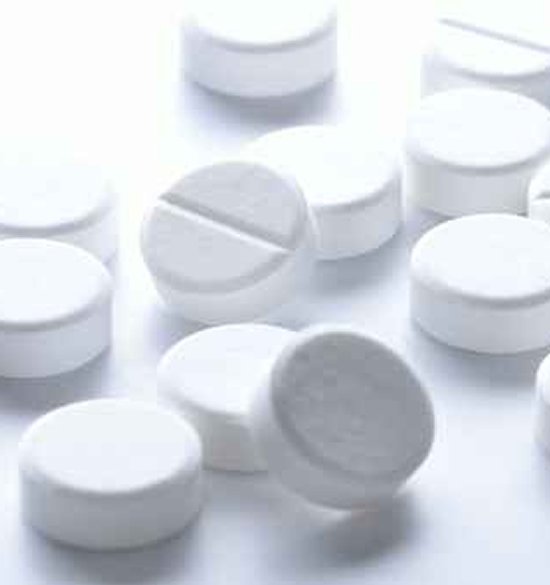Almost everyone is familiar with headaches. The circumstances that are held responsible for headaches are as complex as their manifestations. They range from slight feelings of dragging, stinging, pulsating to feelings of explosion and nausea. Chronic headaches and migraines are mainly treated with painkillers.

Chemical painkillers often only help temporarily. They strain the body. They damage many functions of the body, especially the liver and kidneys as referred to in their instruction leaflets. The smarter choice is sustainable treatment of its causes.
However, the focus of a sustainable medicine should above all be on indirect causes, for instance connected with digestive disorders, infections and organ disorders as well as their interaction.
Certainly there are also direct reasons for headaches, e.g. in conjunction with dental complaints, strain on the cervical spine, hormonal disorders, poor management (of disease) or one-sided strain after heavy alcohol consumption or it may sometimes also be caused by incorrect pillows.
However, the task of painkillers should technically be restricted to relieve pain for a short time in the knowledge of all circumstances.
To do the same without knowing the causes of recurring pain involves high risks.
If immediate and direct causes of pain are excluded, then diagnostics should be entrusted with the task of breaking down the actual causes. These often lie neither in the psyche nor just “in the head”, but much “deeper”. The digestion often shows itself as a mirror of the processes taking place in the body, at the end of which there is the feeling of pain.
In case of digestive disorders, causal medical care often finds liver and gall bladder disorders, disorders of bile secretion and an overload on the kidneys and spleen. These often interact with infections.

Pathogens do not make case for an intact digestion. It is therefore imperative to include them in comprehensive medicine. Many people today live with food intolerances, indigestion, heartburn, etc. The role of infections is underestimated by both patients and doctors.
There are four groups of pathogens, each of which – individually or as a case of multiple infections – can fundamentally impair bodily functions
Yeasts such as Candida spec. are serious infections. They irritate the immune system and put massive strain on the body. They metabolise healthy food and sugar to alcohol. This can also mean for the body to process up to half a litre or even a litre of
toxic alcohol in its digestive system every day. The burden on the liver, gallbladder and kidneys is high, and the body is virtually poisoned by these pathogens.

Bacteria like Helicobacter pylori, today easily and uncomplicatedly diagnosable with simple blood tests, massively disturb digestive processes and many functions in the gastrointestinal tract. They have an equally large influence on the functions of liver, gallbladder and spleen. They also cause poor metabolism.
Parasites like the roundworm (Ascaris lumbricoides) are more common than many doctors and patients suspect. Such parasites cause massive digestive disorders, which leads to organ disorders and symptoms of pain in the causal chain.
Viruses such as noroviruses and rotaviruses cause severely acute diarrhoea.
Infections with these pathogens and mixed infections lead to high strains on the entire body. The great impact on the basic functions of a body due to it is easily fathomable. It is understandable that this also leads to complex diseases, which also include various types of pains.
The cycle of interplay, in which the ailments “escalate” into a complex clinical picture, must be absolutely broken through. Headaches and migraines are often the “tip” of the iceberg of a development that must be traced back to its cause. Anaesthetising pain with painkillers can have large-scale consequences and does not solve the causal issue.
The Normamed method therefore specifically searches for infections and organ disorders. It is an important basis to understand the cycle of the disease and to interrupt it with the help of therapy on the causal level itself. In addition to laboratory analysis with specially designed analyses of infections, a careful ultrasound scan is used with special emphasis on the liver, kidneys and gallbladder, among others.
Traditional Chinese Medicine (TCM) fills in the information lacking in traditional Western specialised medicine with its fine diagnostics.
The comprehensive profile of the pathogen diagnosis, the individual starting position of the organs and the metabolism are the basis for further treatment.
This is coordinated between specialised medicine and TCM such that it is effective, minimally invasive and very well tolerated.


For headaches and migraines, Normamed causal medical care follows the insight that infections and their general neglect can trigger serious disease processes, as opposed to the normal and current therapies.
A case study can help demonstrate, if there are any prospects even with chronic headaches by the help of such examinations and treatments.
It could be established that with targeted therapy,